Croome
It’s 1751. On the death of his brother, George Coventry becomes sixth earl of Coventry, and inherits a hundred year old brick manor house. Determined to make the place more contemporary, he hires an unknown designer, Lancelot Brown, to remodel the house and grounds, and a budding Scottish architect called Robert Adam to work on the interiors. The result was a masterpiece.
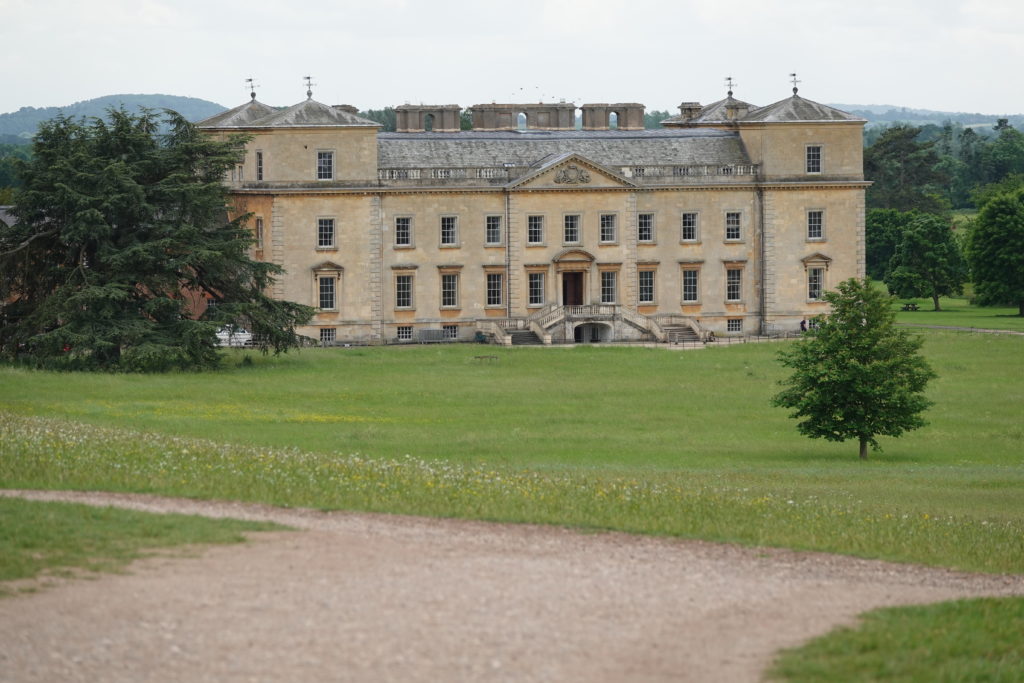
Brown later became known as Capability Brown, the great landscape gardener. Gone were the highly formal garden designs of the past. He went to extreme lengths to make and estate look entirely natural.
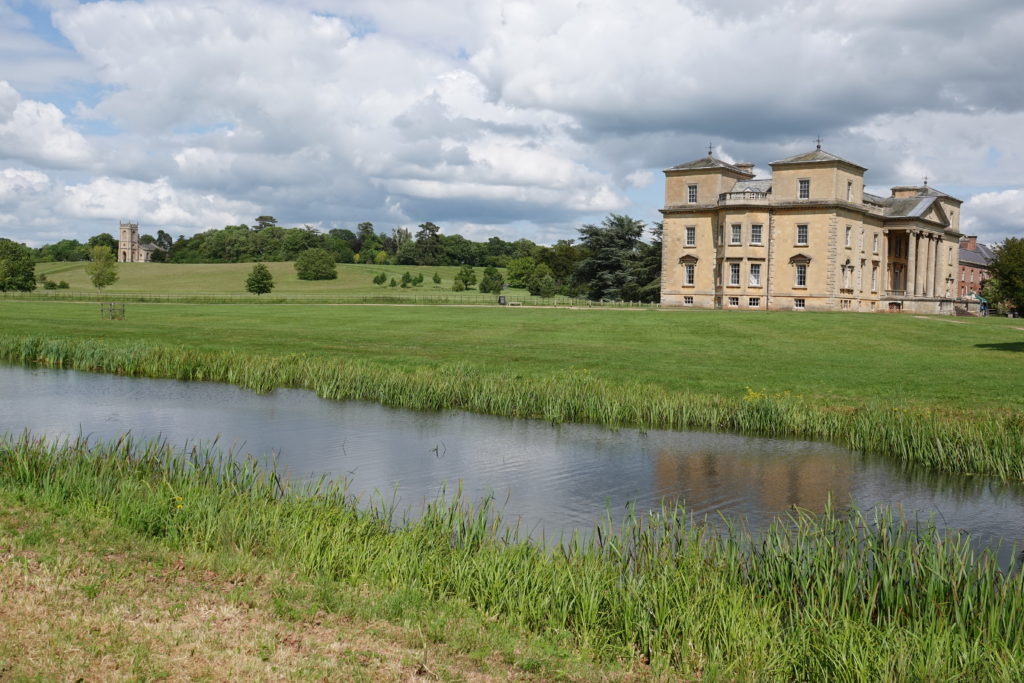
The river in the foreground is artificial. The church on the hill was a replacement for a medieval church that spoiled the view.

Much of the meadow used to be marshy and there are underground brick culverts to improve the drainage. Hedges were torn down and replaced by ha-has. The sheep were sent to art school to improve their positional sense.
Having put immense effort into a natural look, let’s add a few urns.
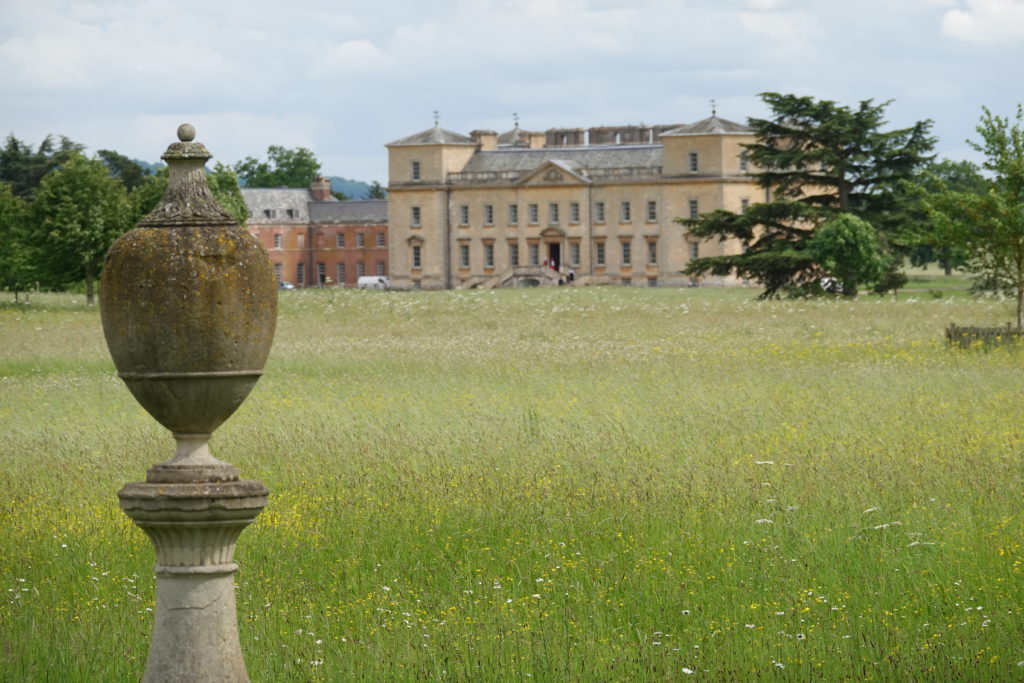
Gorey would be right at home.
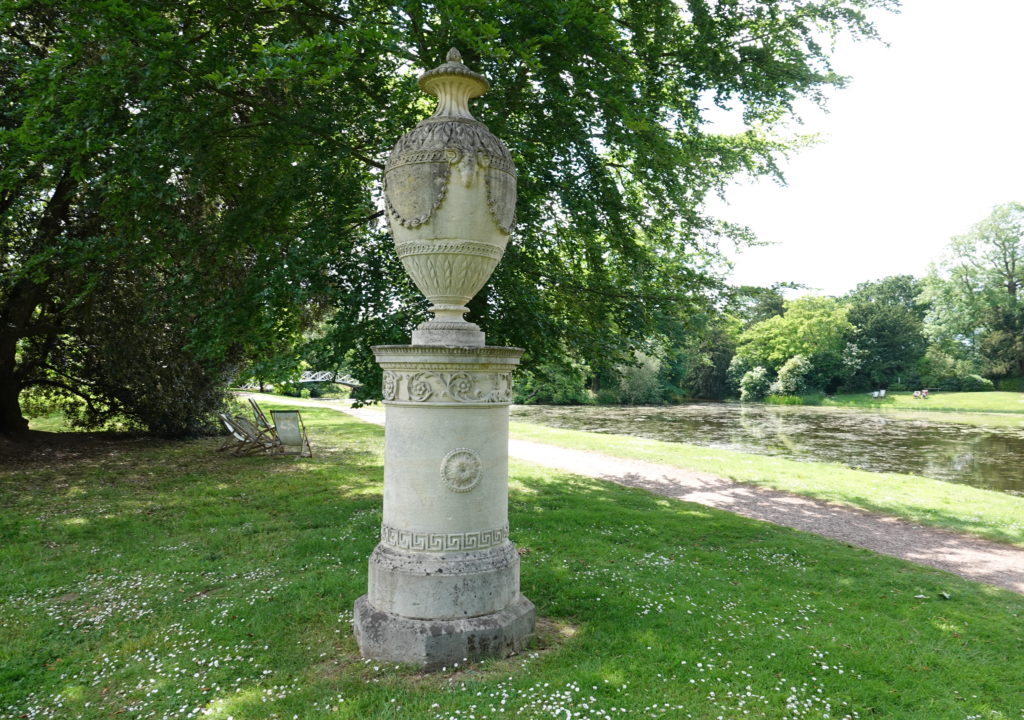
The budget didn’t run to a real druid, so they put up a statue of one.
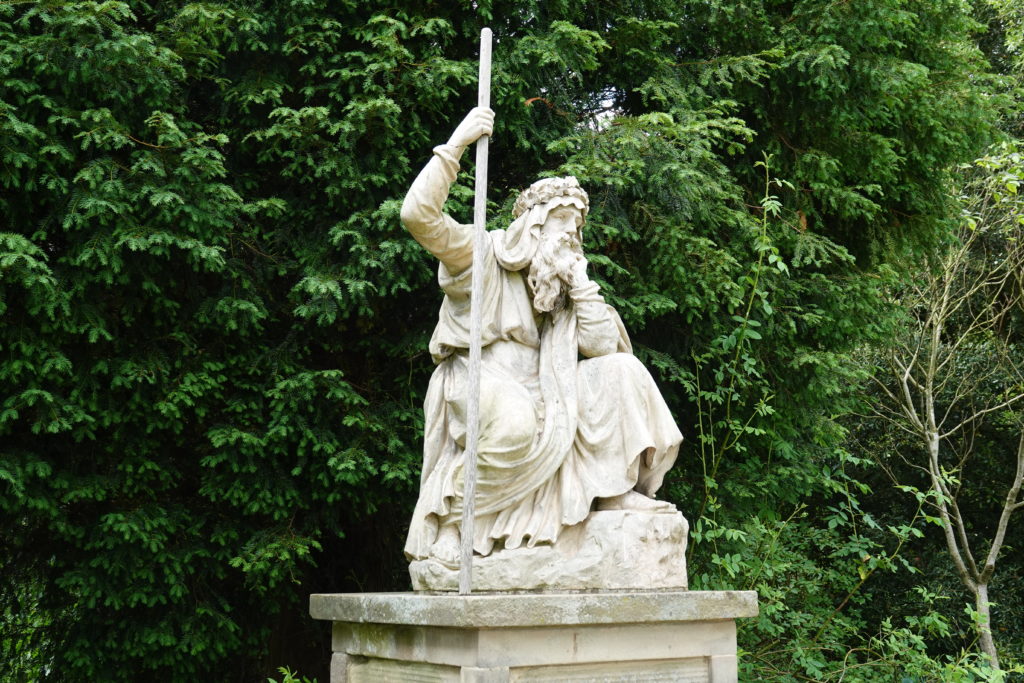
There’s a grotto with a river nymph…
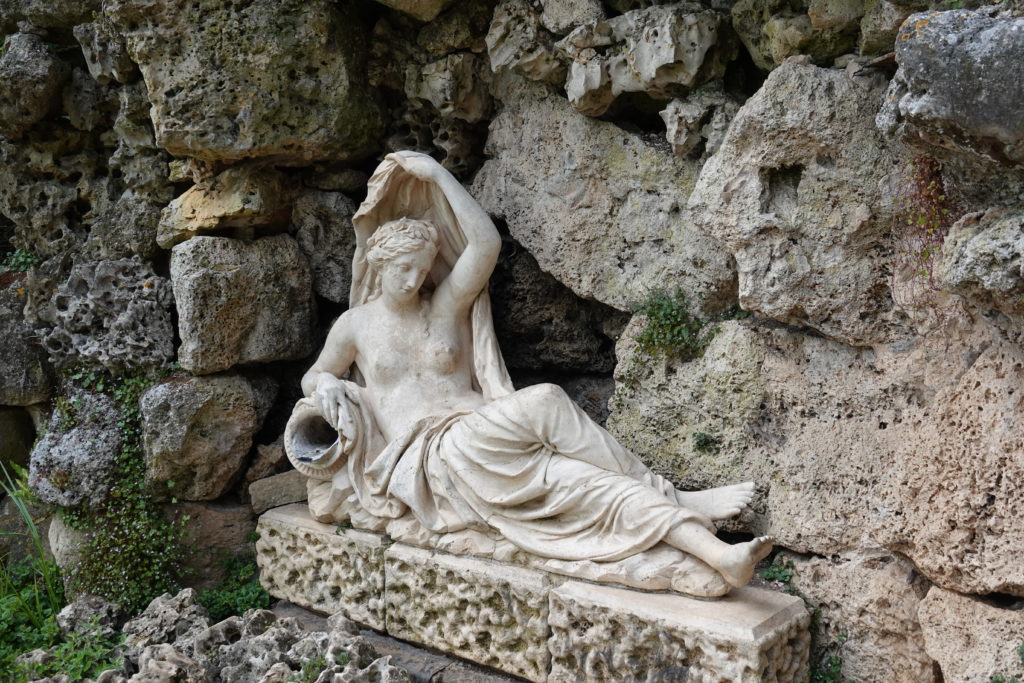
… and a quote from the Aeneid.

Ooooo, look! A neoclassical greenhouse.

Let’s have a random assortment of bridges, too.

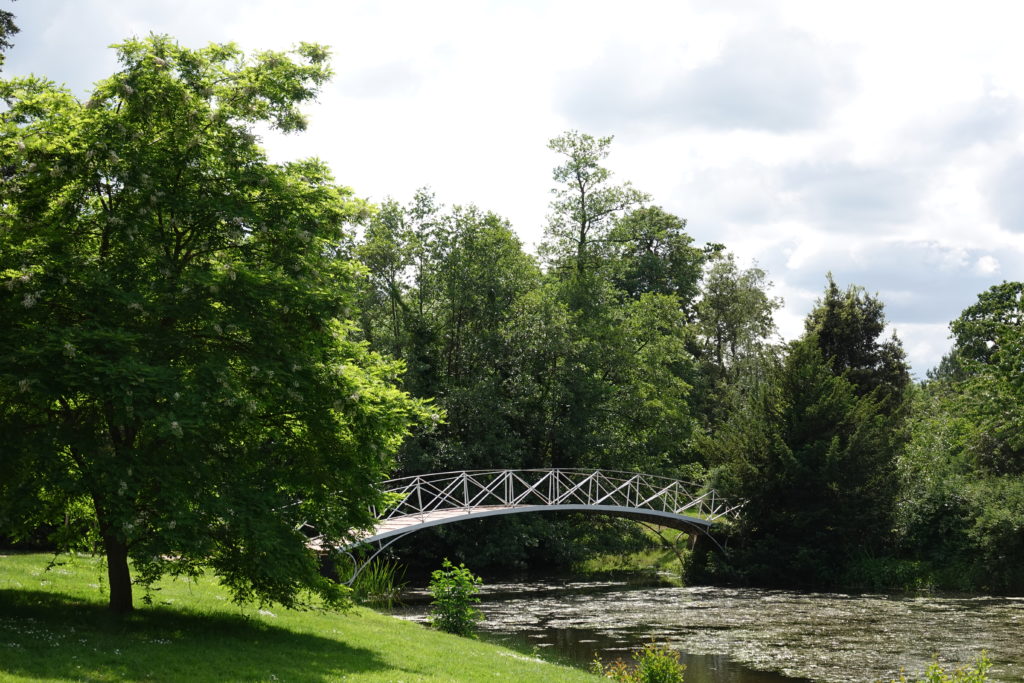
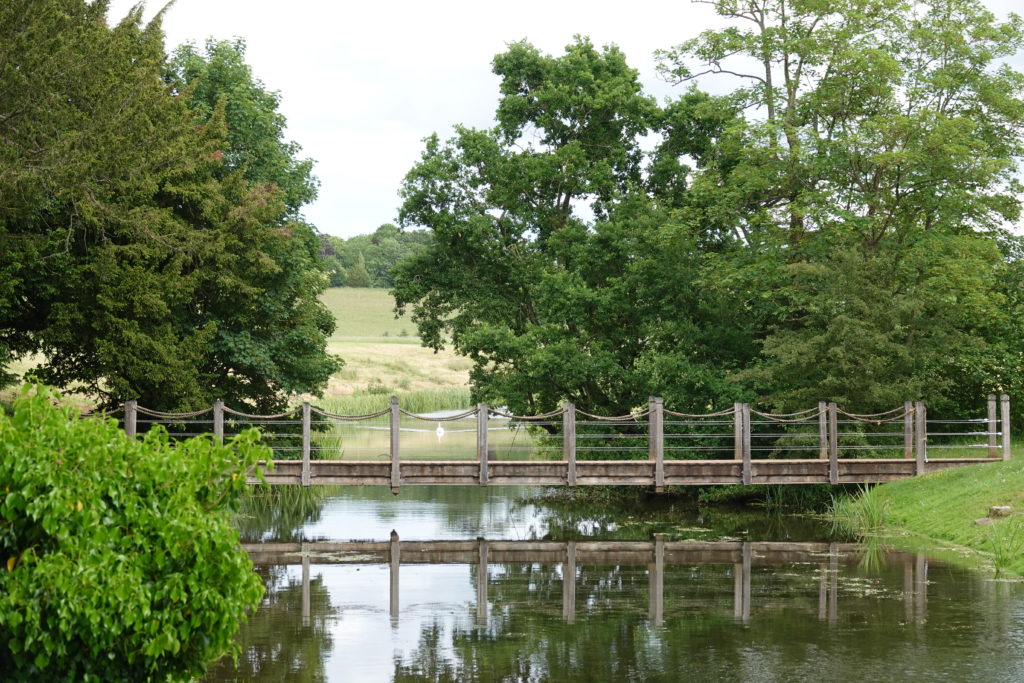
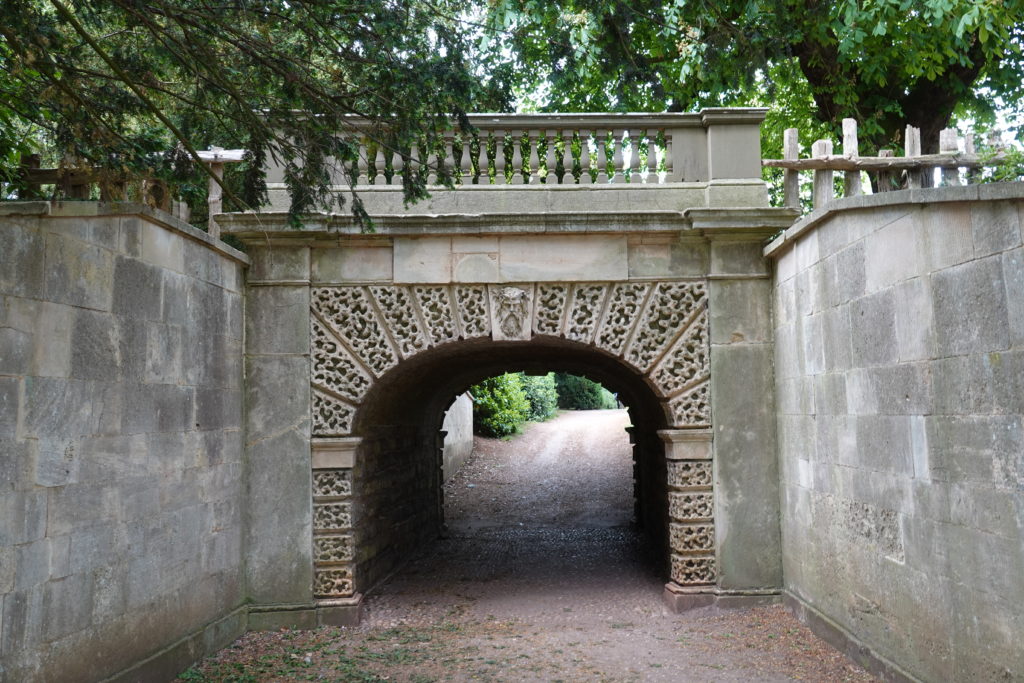
No garden is complete without a Palladian Bus Shelter.
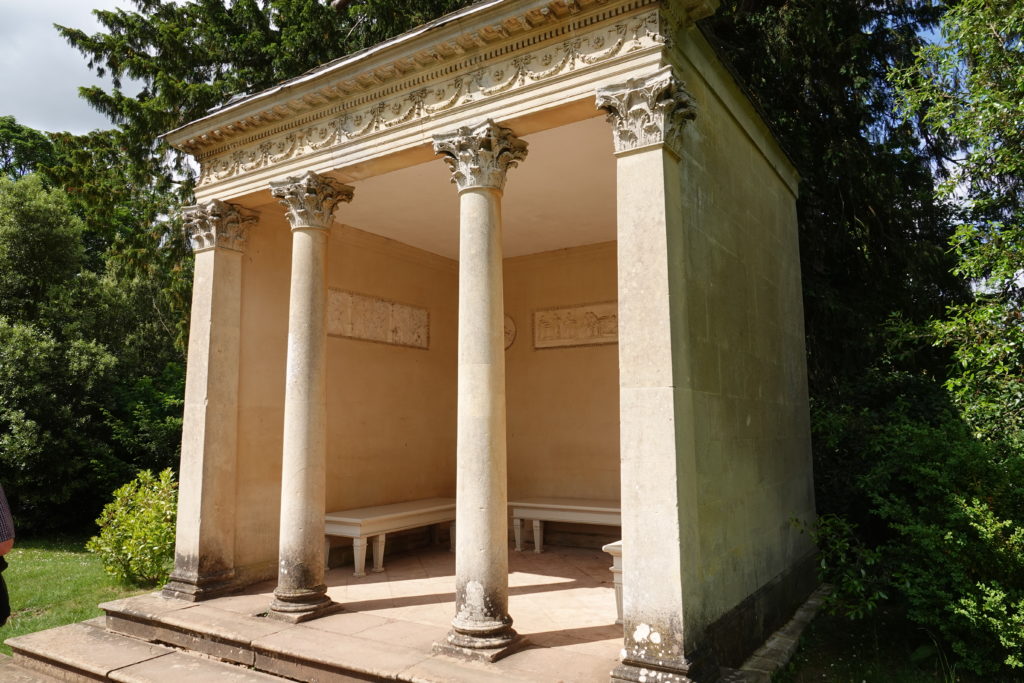
Some time in the succeeding centuries one of the gardeners must have snuck in a flower border, out of sheer perversity.

Adam went on to become a renowned designer. Some of his work on the house had survived, including this lovely ceiling.
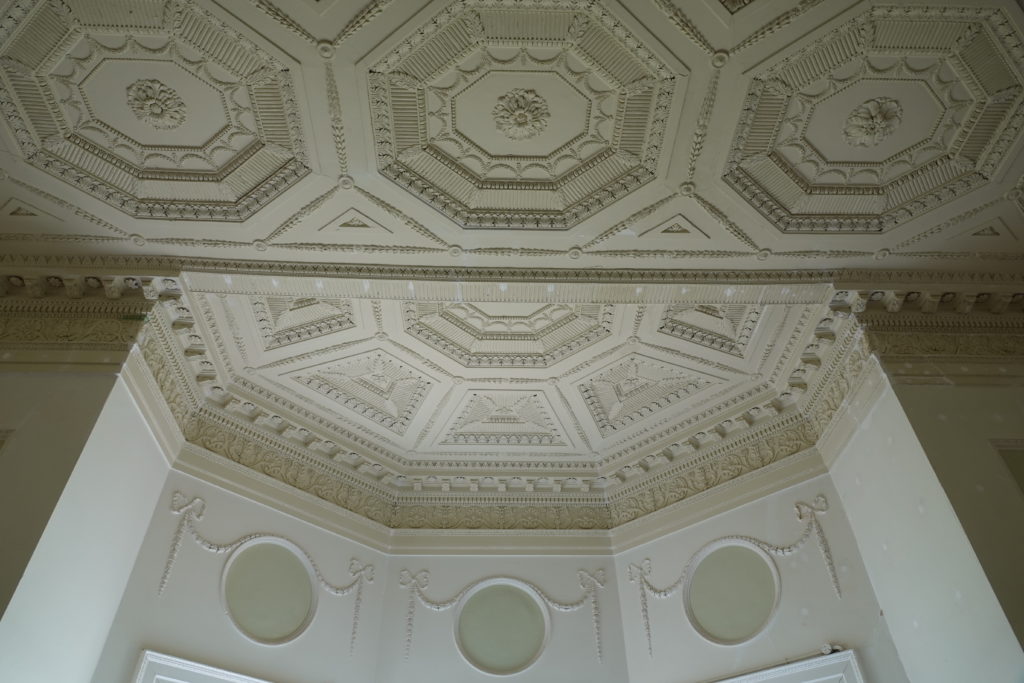
The house has some nice fireplaces.
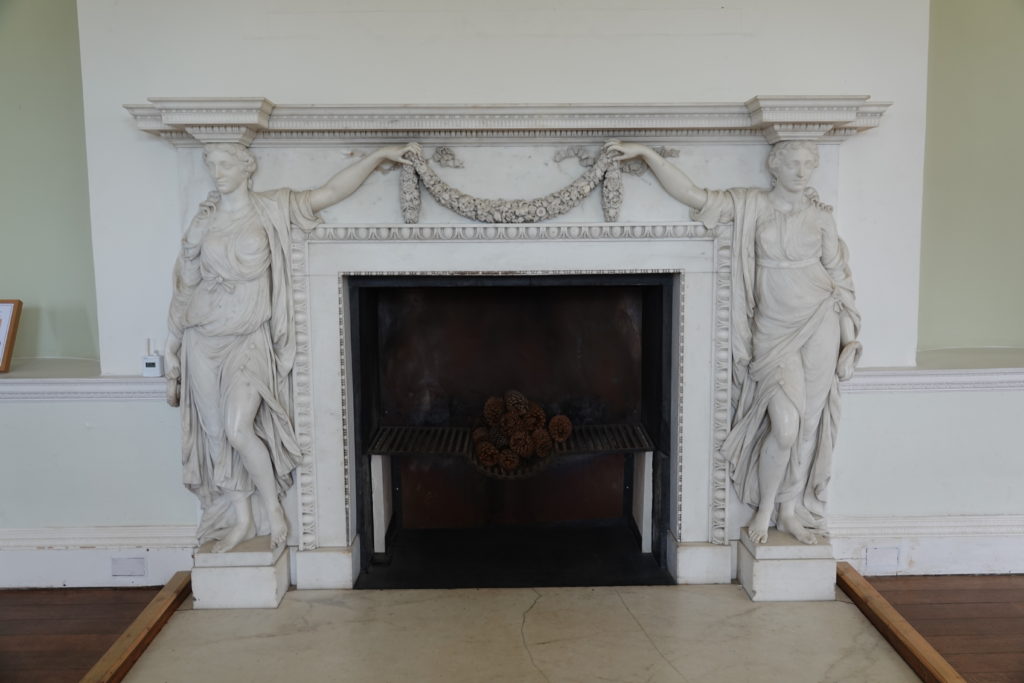

It went through various hands in the 20th century, and for a while was the UK headquarters of the Hare Krishna movement. They lovingly hand painted the glop in some of the rooms.
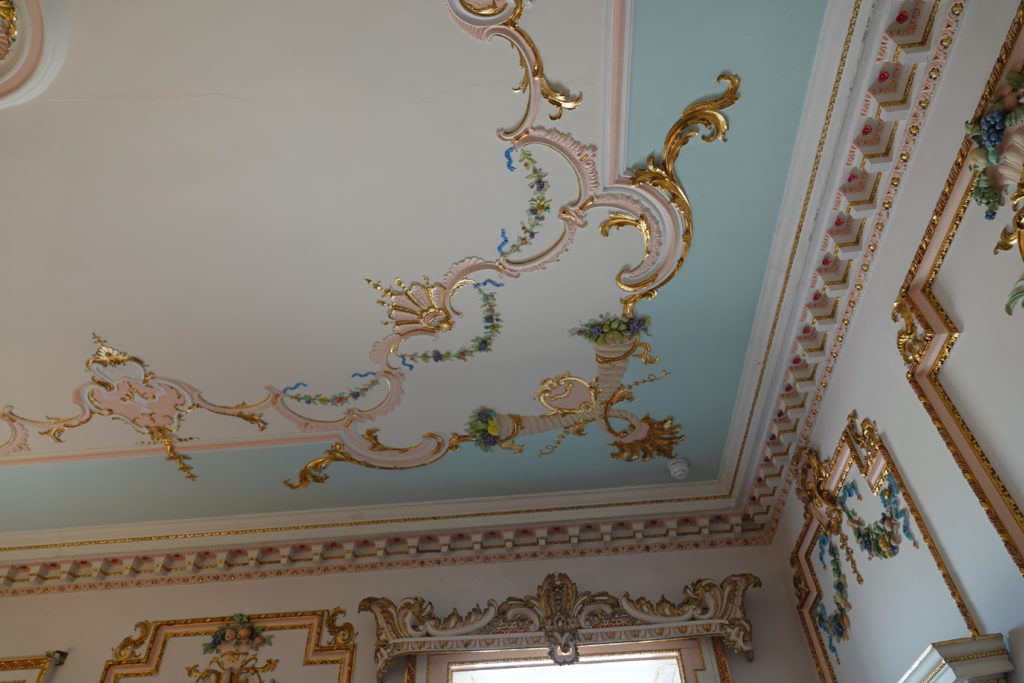


I’d like to show a view of the whole of the fruit room, but the center has been filled with a ghastly mirrored display case for antique china.
Since the furniture from the house was sold off in the 1940s, the National Trust has filled the rooms with whatever art and educational installations they can come up with. Some of them are OK.

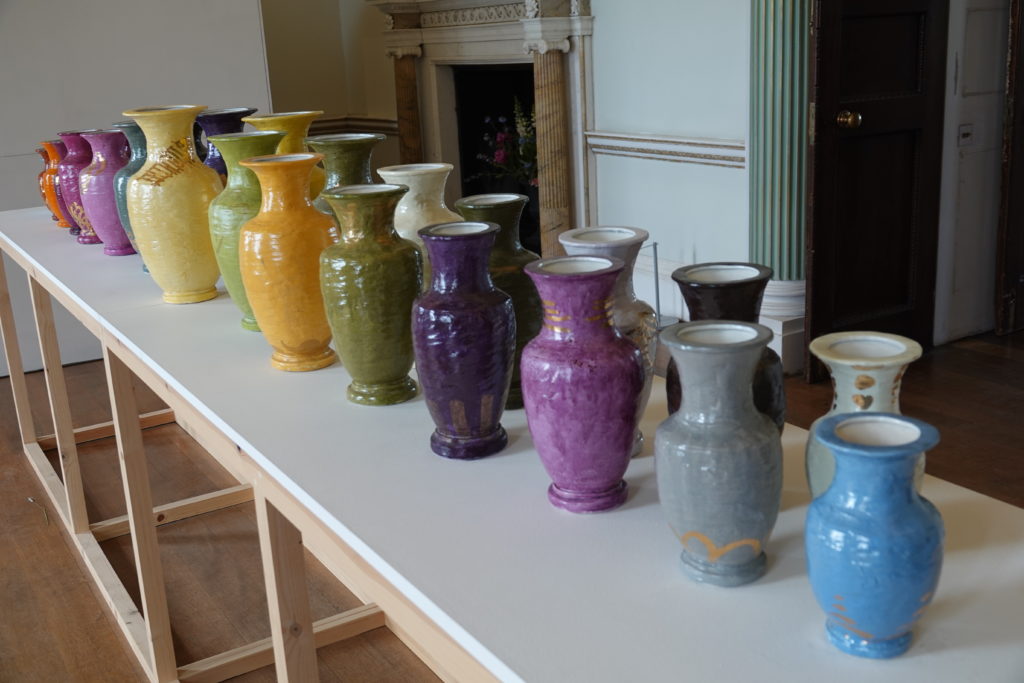
I particularly liked the tapestries by Grayson Perry. This one is a distorted map of the UK emphasizing the difference between the urban elites in London and the rest of the country.
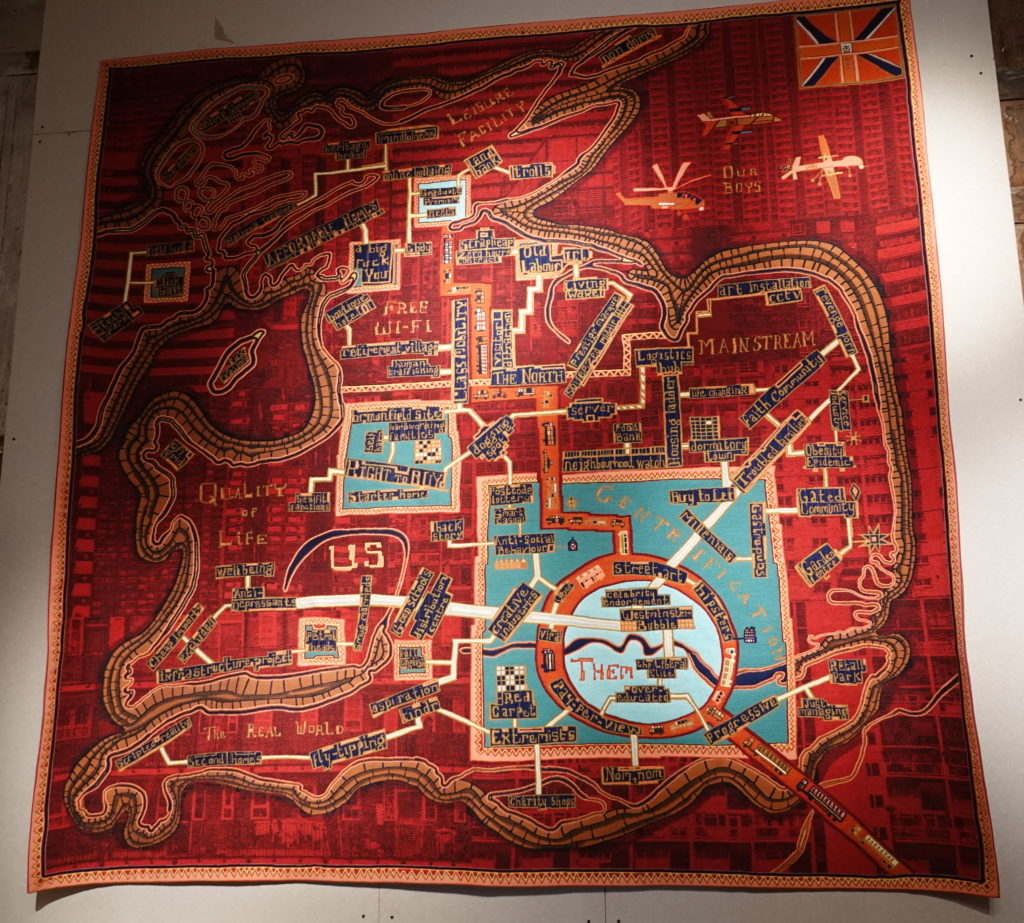
This own also deal with the class and inequality in the UK…
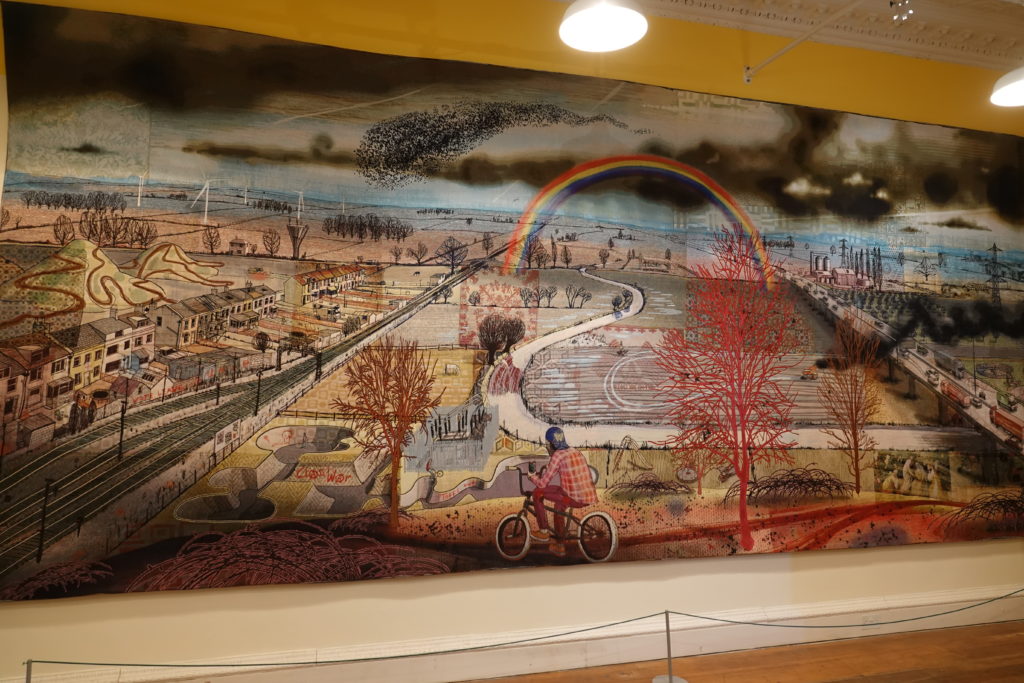
… and it has skulls.

For a while the house was in the hands of a “property developer”.

During and immediately after the Second World War it was an RAF base where they did top secret research on radar. There is a small museum relating to this in one of the surviving wartime huts.

There’s also a ‘canteen’ serving authentic 1940s bangers and mash and not so authentic 1940s sweet potato quiche.
We spent the day there with my brother and his wife, who live in the area. It was great to see them again. We have more adventures planned.
2 thoughts on “Croome”
At your service: Aeneid i.166–8 (apart from the opening En, which has been added in a weak attempt to make the lines seem to make sense out of context): “Check this out! A cave with overhanging crags, and inside sweet waters and seats in the living rock, a home of nymphs.” (I initially mistyped that last word as “numphs”, which takes me back.) Aeneas has just landed on the coast of Carthage. It doesn’t end well.
How well I remember those hot numphs of yesteryear.